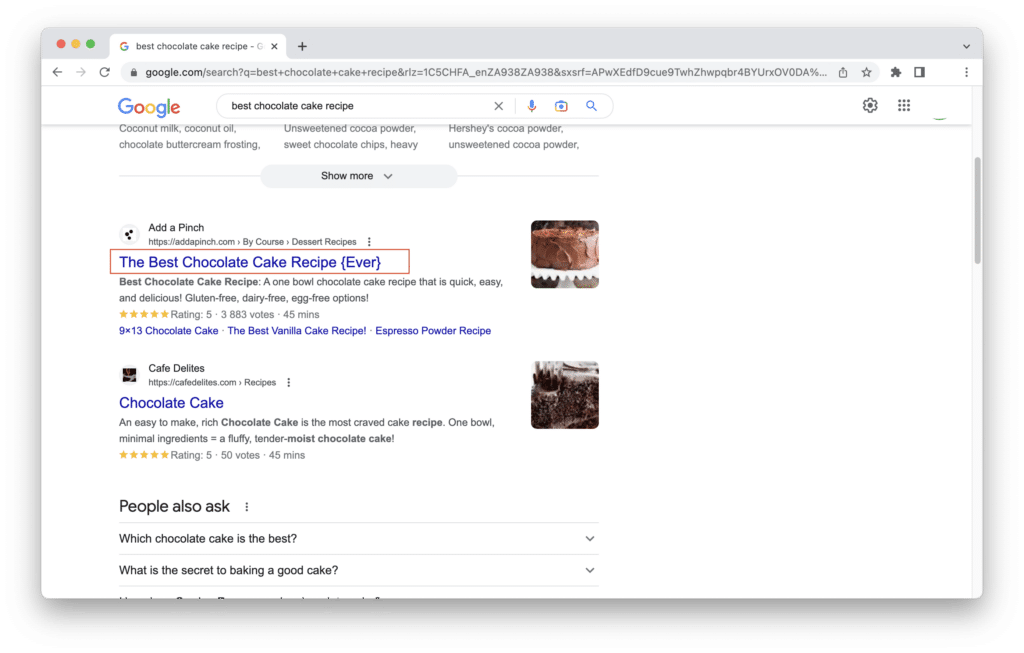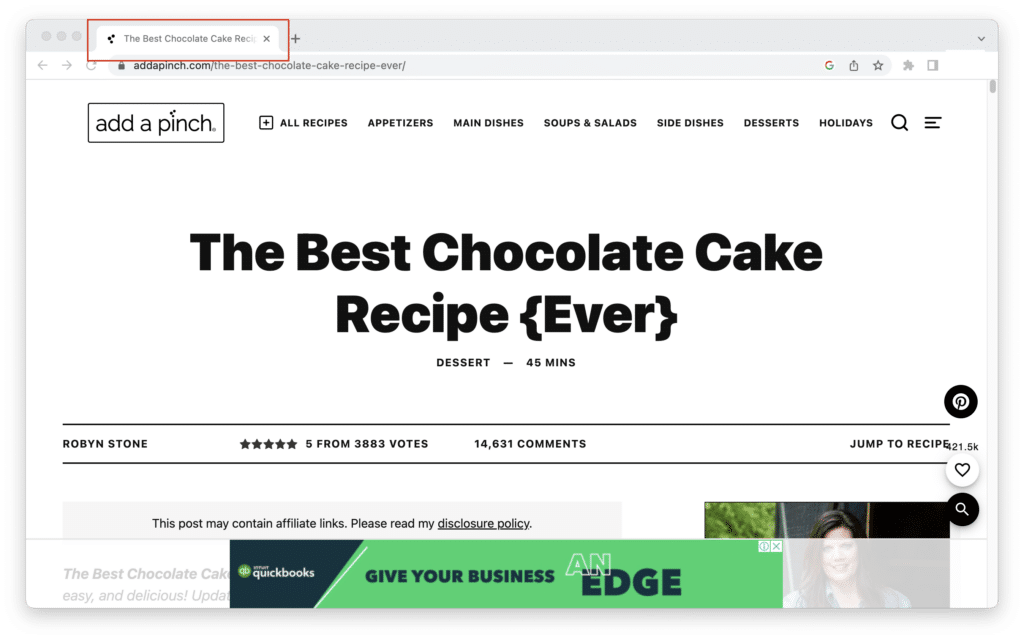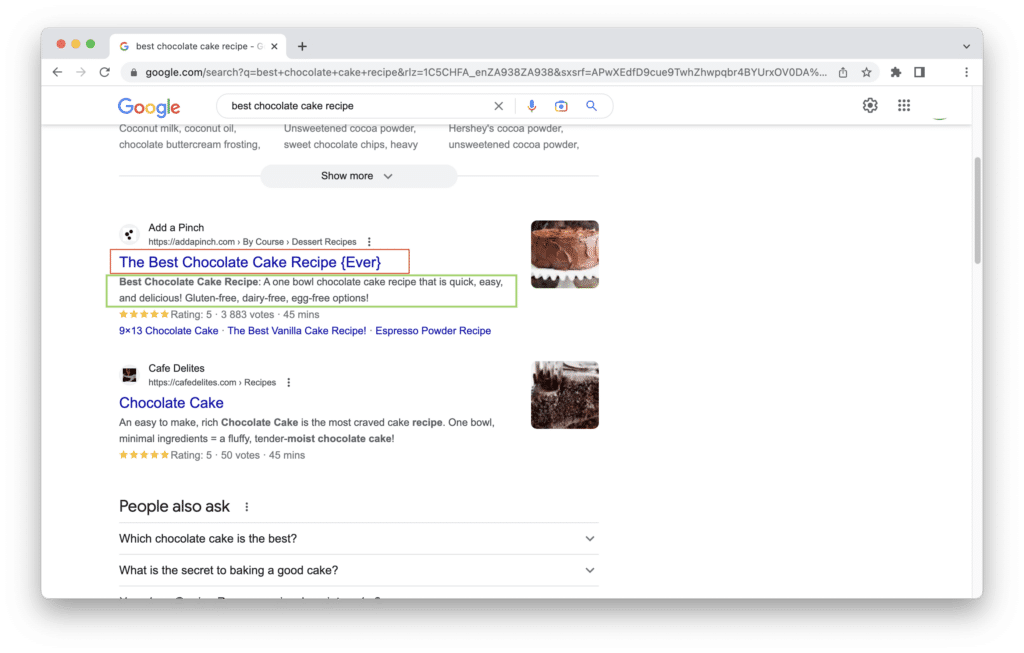A webpage’s title tags and meta description are vital to its on-page Search Engine Optimization (SEO). Unfortunately, they’re often the most frequently forgotten or ignored SEO element when creating new blogs or web pages!
We couldn’t tell you how many web pages we’ve seen drop in search ranking simply because the title tag was missing or the page lacked a compelling meta description to entice clicks from visitors to the website.
So, if you want potential customers to find your website easily, you’ll want to check on the state of your on-page SEO. But what are meta titles, meta tags, and meta descriptions? We find out.
What are Title Tags?
A title tag is an HTML (coding) element that specifies the title of a web page to search engines. It shows up in three key places:
- It appears in the clickable headline for the search engine results page (SERP).

2. When someone visits your page, the title tag is displayed at the top of their web browser window and acts as a placeholder. This works especially well when there are several browser tabs open, so your users can always find your page.

3. Social media networks like Facebook and Twitter will use your title tag to determine what to display when the page is shared.
Top Tips for Writing Title Tags
The title tag of a web page is meant to be an accurate and concise description of a page’s content; essentially, it’s a first impression for users visiting your page from an organic search.
Title tags in SEO are as important as in titles in a monarchy. In the same way they help identify royal family members’ order and significance within a state, title tags inform search engines and potential visitors about each web page. They also tell search engines how to display web pages in users’ search results.
While there isn’t a specific length for title tags, most browsers display 50-60 characters, meaning we try to shoot for 60 characters or fewer. Because what search engines display is based on screen width, the number of characters matters less than what “fits” on the screen.
When it comes to writing titles and descriptions, our team keeps these things in mind:
- Writing titles that don’t truncate (get cut short on SERPs because of space) is an art form. Finding the blend of accuracy, specificity, keyword focus, and character spacing takes practice and work.
- Every page needs a unique title – even if you have a site with hundreds or thousands of pages.
- Keywords must come first. We know that users skim and scan headlines, so most users will only see the first couple of words in your title tag. As a result, we want to put the most important keywords up front and center.
- Leverage your brand. If you have a well-known brand or are the authorized retailer of something specific, use that brand at the end of the title to get organic, brand-focused traction.
What are Meta Descriptions?
Much like titles, meta descriptions are an essential component of your on-page SEO, although in a less direct way than your title tags. While your titles are known to be a ranking factor for Google and the other search engines, meta descriptions aren’t (an announcement from Google back in 2009 explained why). However, meta descriptions are crucial for setting user expectations and explaining what each web page is about.
As we can see in the meta description below, readers can expect to learn about a chocolate cake recipe that only uses one bowl – a score for cleaning up afterward! – and can be made without gluten, dairy, or eggs (which will appeal to vegans or anyone with dietary restrictions).

It’s one of the primary factors influencing a page’s organic click-through rate, impacting your page rankings. Users evaluate the meta descriptions to determine if the page is relevant to their search query and if they want to visit the site.
Top Tips for Writing Meta Descriptions
Meta descriptions can “technically” be any length, but as with your title tags, they typically can be truncated in search results snippets to about 150-160 characters. Therefore, it’s best to keep meta descriptions long enough to be descriptive but short enough to avoid truncation.
Other things a meta description has in common with title tags:
- It also appears in your social media shares as the description.
- It should also include a focused keyword at the front of the phrase.
- It should leverage your brand if that provides a legitimate benefit.
- Every page needs a unique description – even something like a “Contact Us” page.
Those two HTML elements collectively present a vital component of your website. Still, at the end of the day, the most important aspect to remember is having high-quality content that focuses on users’ needs and satisfaction. We need titles and descriptions to entice users to get to our sites, but the relevance and authority of each page’s content establish its rankings.
Have you checked to see if you have all your title tags and meta descriptions? If you need assistance with your on-page SEO efforts, contact our team for help.




Leave a Reply